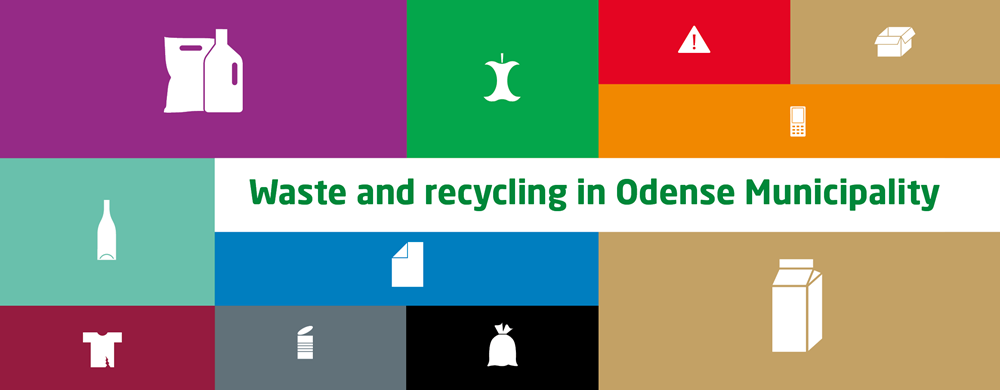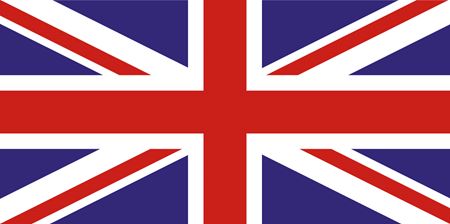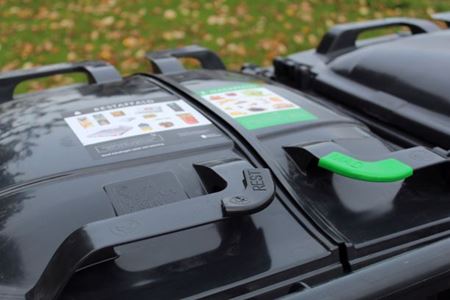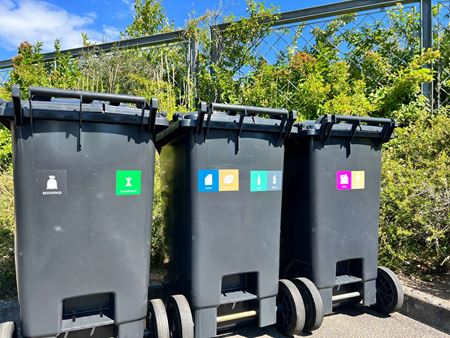Odense Waste Management collects food waste, residual waste, paper, small cardboard items, glass, metals, plastics, food & beverage cartons, hazardous waste, small electronics and textile waste. This makes it easier for the individual household to dispose more types of waste for recycling - and consequently take better care of the environment by recycling more ressources from the waste.
10 types of waste are collected
Most single-family households has 3 x 240 L bins
- 1 recycling bin for paper & small cardboard items in one compartment and metal & glass in the other compartment
- 1 food and residual waste bin, where food waste is put in one compartment and residual waste is put in the other compartment.
- 1 bin for plastics and food & beverage cartons, where both types of waste fractions are put in the same bin with no compartment
- Hazardous waste and small electronics are put in the red box.
- Textile waste is placed in plastic bags - the service is ordered on mit.odenserenovation.dk/
At apartments, housing associations and other places with shared waste facilities the bins might have other shapes, sizes and designs, but the way we sort waste will be the same for everyone.
How to sort
In the present system we collect more types of waste at the household. Read the sorting guide below the picture.

Food waste
- Rice, pasta and cheese
- Vegetable and fruit - raw, boiled and peels
- Tea leaves and coffee ground (with filters and bags)
- Fish, meat and bones
- Bread, cookies and cakes
- Gravy and fat
Food waste must be put in bags - remember to tie a knot on the bag.
Residual waste
- Milk and juice cartons
- Pizza boxes
- Dirty paper and dirty plastic
- Other packaging which cannot be scraped clean
- Vacuum cleaner bags
- Diapers
- Hygiene waste such as washcloths, cotton swaps and cotton pads
Residual waste must be put in bags - remember to tie a knot on the bag.
Paper and small cardboard - sorted in the same compartment
- Newspapers, print advertisements and weekly magazines
- Magazines and brochures
- Office paper and window envelopes
- Phone books
- Boxes from cereal and oatmeal
- Corrugated cardboard and carton
- Cardboard cylinders from kitchen and toilet rolls
- Small cardboard boxes
- Egg trays
Glass and metal - sorted in the same compartment
- Bottles from wine, beer and soft drinks
- Packaging from beers, coffee and jam (emptied and scraped)
- Glass bottles from ketchup and dressings (emptied and scraped)
- Beer and soft drink cans
- Tin cans (emptied and scraped)
- Tealight holders
Aluminum trays- Lids and caps
Plastic and food & beverages cartons - sorted in the same bin with no compartment
- Milk and yoghurt cartons
- Cartons for juice and similar
- Cartons for food such as tomatoes and beans
Hazardous waste
- Paint residues
- Spray cans
- Chemical
- Light sources such as energy saving bulbs
- LED bulbs
- Nail polish and nail remover
- Insecticides and pesticides
Small electronics
- Mobile phones, tablets and laptops
- Toycontaining electronics
- Chargers, cables and wires
- Small household appliances
- Flashlight and bicycle lamps
- Electronical and electronical tools
Textile waste
- Ripped clothes
- Worn out clothes
- Old and damaged socks and underwear
- Ripped towels, dishtowels and curtains - also with stains
- Ripped cloths
- Fabric leftovers
Batteries on the lid of your bin
For single-family households batteries can be placed in a clear bag on top of the bin on the collection day. At apartments the batteries must be put in the box on the side of the bin. Some places have other solutions for batteries. If you are in doubt ask the superintendent where you live.




